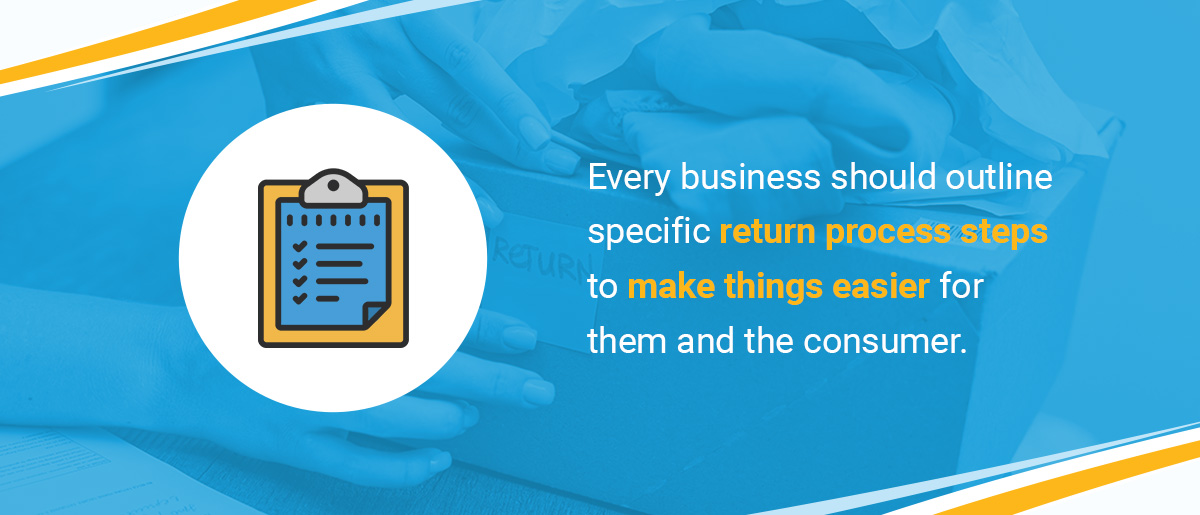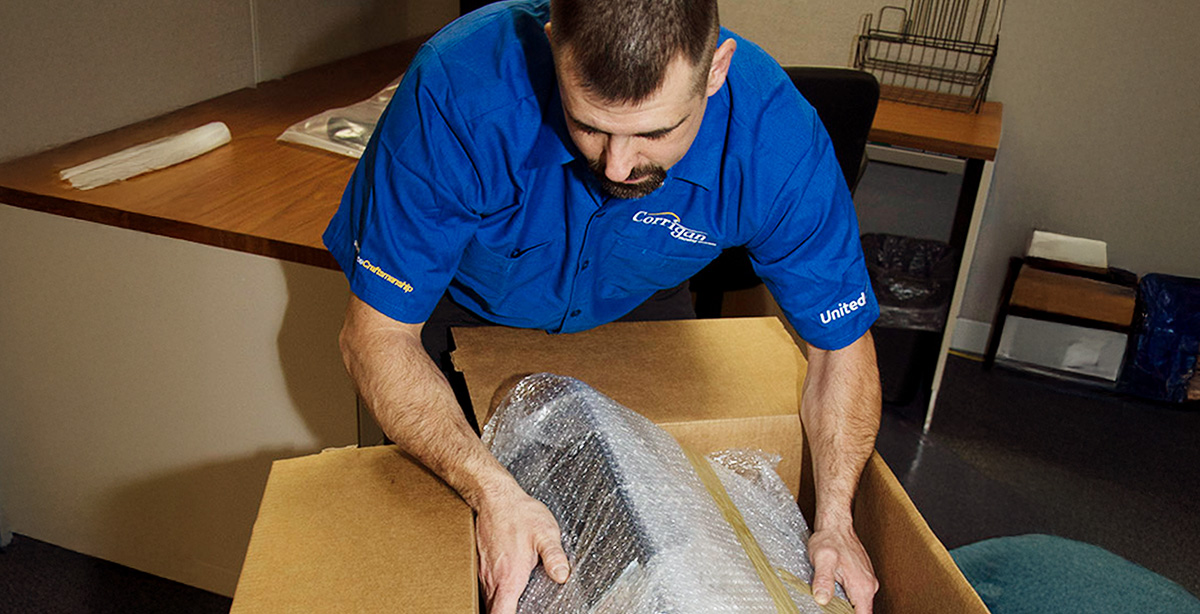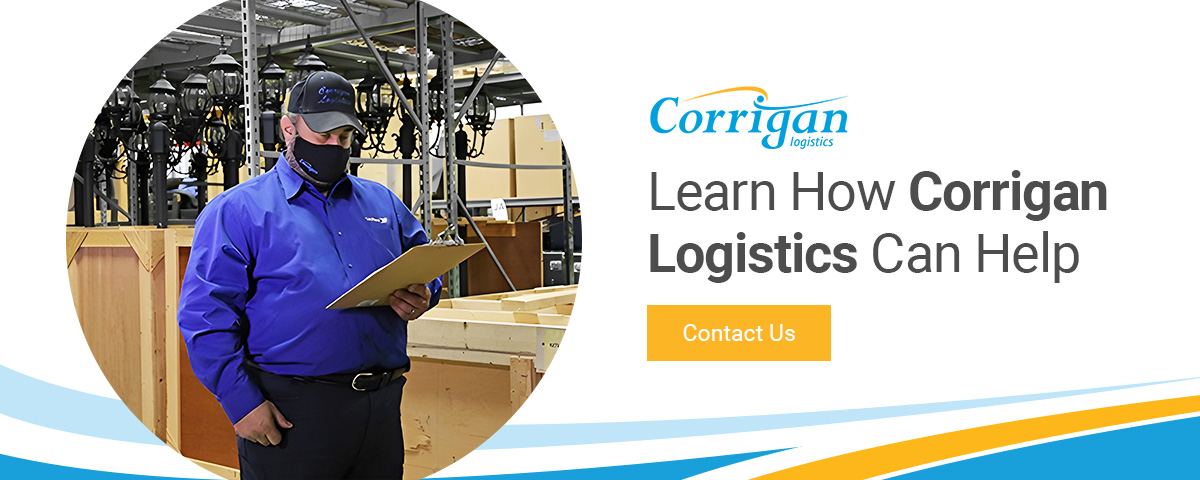When a customer orders and receives a pair of shoes that don’t fit, they need a way to send them back to the company. This return process happens through reverse logistics — the opposite process of the typical supply chain flow. It’s an essential part of the customer experience and can be optimized to support an eco-friendly business model.
This quick informational guide to reverse logistics explains how the process works to help you understand its importance in the supply chain.
Learn More About Our Reverse Logistics Services
Reverse Logistics Explained
In reverse logistics, the end consumer sends an item back through the supply chain to the retailer or manufacturer, which is the opposite of the typical supply chain flow. Most often, reverse logistics is necessary when a customer wants to make a return or exchange, but it can also be used for recycling or disposal. There are five “Rs” that make up reverse logistics:
- Returns and exchanges
- Replacements
- Repairs
- Reselling and repackaging
- Recycling and disposal
Within reverse logistics, you’ll find several different processes and components:
- Returns management: This type of reverse logistics focuses on customer returns, including re-returns, where someone purchases an already returned item and returns it. The returns management approach should be streamlined and hassle-free to create a positive customer experience.
- Remanufacturing or refurbishment: When customers return defective parts, companies can remanufacture or refurbish them to avoid losing money and support sustainability. For example, someone might return an air conditioning unit, and the retailer might rework it before putting it back up for sale.
- Rentals and leases: Once rental and lease terms end, customers need a way to send the products back to the retailer. This type of reverse logistics covers the return, plus recycling and disposal or refurbishment.
- Repair and maintenance: Some items come with warranties or agreements that allow customers to send them back to the manufacturer for maintenance. Then, the product is returned to the customer, or the damaged product is repaired and resold.
- End of service life: When products reach the end of their service lives, they may be returned so the manufacturer can dispose of them properly. For example, a company may offer a recycling program for certain items, such as coffee pods.
- Delivery failure: If product delivery fails in the final logistics phase, the package is returned to a fulfillment center. Then, it’s either sent back to the manufacturer or the issue is corrected, and the product is resent to the customer.
- Unsold goods: When retailers can’t sell certain items or customers refuse product deliveries, reverse logistics for unsold goods ensures the products get back to the manufacturer.
The Reverse Logistics Process
Depending on your business, you may implement a variety of reverse logistics types. For example, a clothing retailer might focus on returns management and dealing with unsold goods, while an electronics brand would also handle remanufacturing and end-of-service life. Either way, much of the reverse logistics process follows similar steps:
1. Processing
The process begins when a customer initiates a return. Once that happens, the company collects all the necessary order information, including which item is being returned and its condition. The customer also indicates whether they want a replacement, a refund or a repair. Then, the company provides instructions for how to make the return.

Every business should outline specific return process steps to make things easier for them and the consumer. If you can provide an accessible online return form or a dedicated support line for returns, your customers will appreciate it.
2. Categorizing
When the returned item reaches the retailer’s processing center, it’s time for the team to categorize it. Typically, you’ll need to fix, dispose of or prepare the product for resale. If you plan to resell the item, determine whether you’ll resell it as new or refurbished.
An optimized reverse logistics system can help you speed up the process by identifying where returned items should go before they arrive. For example, during the return initiation process, you can ask the customer to indicate the reason for their return. This information is essential because it keeps products moving — returns that are in constant motion reduce waste and save time.
3. Repairing and Refurbishing
If a return is sent for repairs, a team member will evaluate the item and determine whether they can fix it. Then, the product is repaired and restocked or sent back to the customer, or it’s prepared for disposal. Sometimes, a broken product contains working parts, so the company may disassemble it so they can resell certain components.
4. Recycling and Disposal
Any item that can’t be fixed or disassembled for parts ends up in the disposal phase. For most organizations, recycling is the first consideration, and whatever can’t be recycled is disposed of properly. It’s also important to consider any items that need a more specialized disposal process, such as batteries. Once the return is recycled or disposed of, the reverse logistics process is complete.
The Benefits of Reverse Logistics
Offering customers the option to send purchases back is essential for satisfaction and loyalty. It’s also important to make that process accessible, simple and, if possible, free. According to the National Retail Federation, 67% of shoppers say a negative return experience would discourage them from shopping from the same retailer again. With an optimized reverse logistics process, you can keep customers coming back with winning service.
This aspect of the supply chain is also crucial for visibility and efficiency. By creating a closed-loop supply chain, your business keeps goods moving, and every essential process remains in sync. As an additional benefit, a circular economy improves sustainability. When you find value in every product, you reduce waste substantially, which also helps with cost reduction.
Learn How Corrigan Logistics Can Help
Implementing a strong reverse logistics process takes effort and time. Even the best strategies encounter challenges, particularly with management and organization. The right logistics partner can help you streamline your approach to create as much impact as possible.
Corrigan Logistics has nearly 100 years of experience in commercial logistics, and we offer different services to support your business needs, including reverse logistics. Whether you need help repurposing goods or finding sustainable disposal options, our expert in-house team is ready to assist. In all our offerings, we prioritize customer satisfaction and operational efficiency to meet your goals.
Turn to us as your one-stop shop for all things logistics. Learn more about Corrigan Logistics, and reach out for a quote or more information today.




